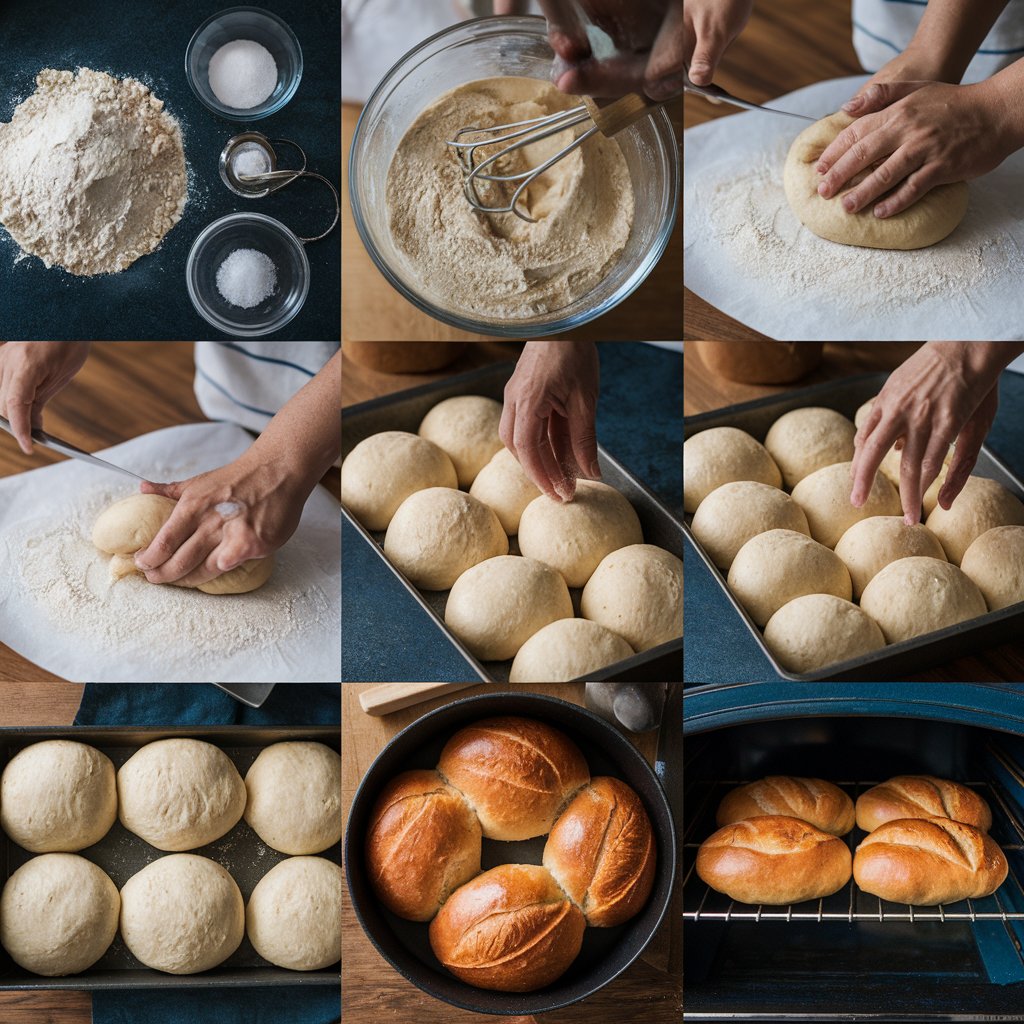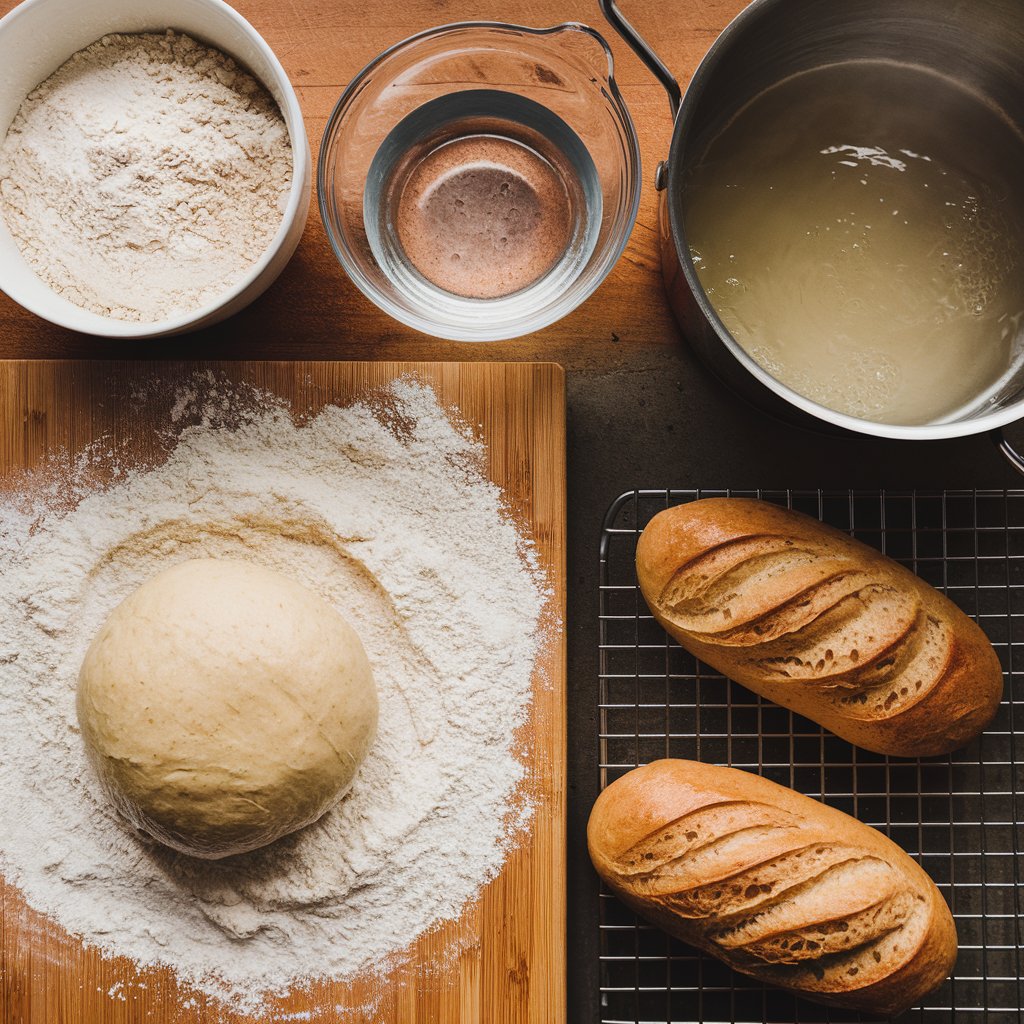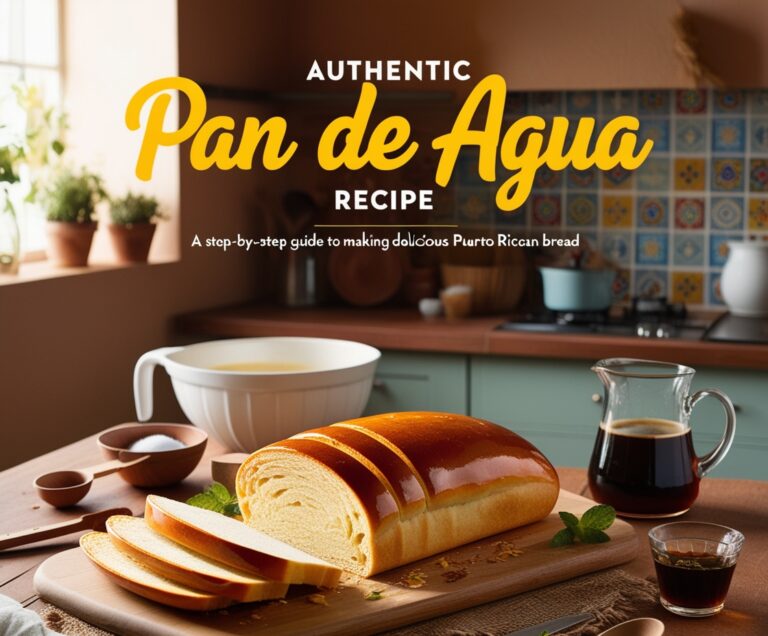Introduction
Pan de Agua, which means “water bread,” is a staple in many Latin American and Caribbean households. Known for its mild and airy indoors encased in a crunchy crust, this bread gives a simple but pleasant flavor that complements plenty of dishes. Making Pan de Agua from scratch is easier than you might suppose and calls for only some fundamental elements. In this text, we’ll explore the conventional Pan de Agua recipe in element, protecting tips, strategies, and variations to help you create an true and scrumptious loaf proper at domestic.
Table of Contents
The Origins of Pan de Agua
Pan de Agua has its roots in Spanish and Latin American baking traditions. It’s popular in countries like Puerto Rico, the Dominican Republic, and Cuba, where it is loved as an normal bread. Its simplicity, versatility, and extraordinary texture make it ideal for breakfast, as a sandwich base, or surely with a pat of butter. The distinguishing function of Pan de Agua is its crust, completed by means of using water all through the baking system to create steam. This technique enables to offer the bread its specific texture and light, airy crumb.
Ingredients for Authentic Pan de Agua Recipe
Making Pan de Agua calls for minimum substances, maximum of which you can have already got at home. Here’s what you’ll need:
- 4 cups of bread flour: Bread flour has a higher gluten content material, which facilitates create an appropriate chunk and texture.
- 1 ½ cups of lukewarm water: Warm water aids in activating the yeast and helps gain the proper dough consistency.
- 1 tablespoon of sugar: This feeds the yeast, aiding within the fermentation process.
- 2 teaspoons of salt: Essential for taste and structure within the dough.
- 2 teaspoons of lively dry yeast: Yeast is important for leavening the bread, giving it upward push and texture.
Optional:
- Cornmeal or flour for dusting: Adds texture to the crust and prevents sticking at some point of baking.

Step-through-Step Guide to Making Pan de Agua
Step 1: Activate the Yeast
Start by way of combining the lukewarm water, sugar, and yeast in a huge blending bowl. Stir lightly and allow the aggregate sit down for five-10 minutes till it turns into frothy. This activation step is crucial to make certain that your yeast is lively and prepared to assist the dough upward push.
Step 2: Mix the Dough
Add the bread flour and salt to the yeast mixture. Stir until the elements are well mixed and a sticky dough starts to shape. You can use a wood spoon or a dough hook on a stand mixer if you have one. Mixing very well at this stage allows develop the gluten important for a chewy, ethereal texture.
Step 3: Knead the Dough
Turn the dough out onto a gently floured floor and knead it for approximately 10 mins. If you’re using a stand mixer, allow it knead the dough on a low placing for about 8 minutes. The dough should become easy and elastic. Avoid adding too much more flour, as this may make the bread dense instead of light and ethereal.
Step 4: Let the Dough Rise
Place the kneaded dough in a lightly oiled bowl, cover it with a smooth kitchen towel, and permit it upward thrust in a warm vicinity for about 1 to at least one.Five hours, or till it has doubled in length. This initial upward thrust is vital for developing the bread’s taste and shape.
Step 5: Shape the Loaves
Once the dough has risen, punch it down lightly to take away air bubbles. Divide the dough into same portions and shape each one into a protracted, oval loaf. Place the loaves on a baking sheet coated with parchment paper or dusted with cornmeal.
Step 6: Second Rise
Cover the formed loaves with a kitchen towel and permit them to rise once more for approximately 30-45 mins. This 2d upward thrust helps the loaves extend and creates a lighter crumb shape.
Achieving the Perfect Crust with Steam
Step 7: Preheat the Oven
Preheat your oven to 450°F (232°C). Place a baking pan with water on the lowest rack of the oven to create steam. This steam will help achieve the feature crispy crust of Pan de Agua.
Step 8: Score the Loaves
Use a pointy knife to make some shallow slashes on the top of each loaf. This lets in the bread to make bigger fully in the oven and creates an appealing, rustic appearance.
Step 9: Bake the Bread
Place the baking sheet with the loaves at the middle rack of the oven. Bake for 20-25 mins, or till the loaves are golden brown and the crust is firm. The water in the pan must create steam, ensuing in a perfect crust. If you need a shinier crust, you could brush the loaves with a little water earlier than baking.

Serving and Storing Pan de Agua
Once your Pan de Agua is golden and crispy, eliminate it from the oven and permit it cool on a wire rack. Serve it warm or at room temperature. It pairs splendidly with butter, olive oil, or as a base for sandwiches.
To save Pan de Agua, wrap it in a clean cloth or place it in a paper bag. Avoid plastic luggage, as those entice moisture and make the crust tender. Stored properly, it’s going to live fresh for 1-2 days. You can also freeze Pan de Agua; wrap it tightly in plastic wrap and area it in a freezer bag. Reheat in a 350°F (one hundred seventy five°C) oven to restore its crispness.
Tips for Perfecting Your Pan de Agua Recipe
- Control the Dough’s Hydration: Pan de Agua’s texture depends on having the proper hydration stage. The dough have to be barely sticky but workable. Resist the urge to add an excessive amount of flour.
- Experiment with Shaping: You can form Pan de Agua into numerous forms, from baguette-like loaves to smaller rolls. Just adjust the baking time accordingly.
- Use a Baking Stone: If you have got one, a baking stone can in addition enhance the crust with the aid of evenly dispensing warmth and moisture.
- Play with Ingredients: For a twist at the conventional recipe, recall adding herbs like rosemary, thyme, or a touch of garlic powder. You also can use specific flours, such as whole wheat or rye, to add complexity to the taste.
Variations at the Pan de Agua Recipe
Pan de Agua is enormously versatile, and lots of areas have their versions. Here are some popular approaches to tweak the traditional recipe:
- Whole Wheat Pan de Agua: Replace a part of the bread flour with whole wheat flour for a heartier texture and barely nutty taste.
- Garlic and Herb Pan de Agua: Add fresh herbs and minced garlic to the dough to infuse it with additional flavors.
- Cheesy Pan de Agua: For a savory twist, fold in shredded cheese or sprinkle grated Parmesan on top of the loaves before baking.

Why Make Pan de Agua at Home?
The enjoy of making Pan de Agua from scratch is noticeably profitable. Not most effective do you get to experience freshly baked bread, however the simplicity and pleasant of the elements increase every loaf to something certainly unique. When you bake Pan de Agua at domestic, you control each aspect of the method, from the first-class of ingredients to the baking environment.
Also read: Unlocking Savings with MyWirelessCoupons.Com: Your Ultimate Guide to Smart Wireless Shopping
Conclusion
Mastering this Pan de Agua recipe allows you to experience a slice of Latin American way of life for your personal kitchen. With its crusty exterior and tender interior, this bread is ideal for any occasion, whether you are having a leisurely breakfast or preparing a gourmet sandwich. Baking Pan de Agua is a lovely blend of simplicity and artistry, connecting you to the cultures and flavors of Latin America. So next time you crave something unique, try this conventional recipe and experience the end result of your hard work in every crunchy, soft bite.

